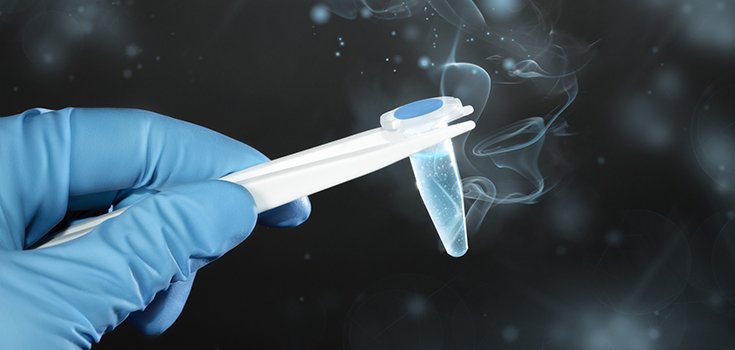Researchers in U.S. Revive Cryogenically Frozen Life

Until now, long-distance space travel has always been exclusively found in sci-fi books and flicks. I say “until now” because U.S. researchers have successfully reanimated cryogenically frozen life, in the form of frozen zebra fish embryos – something scientists have been trying to do for 60 years. [1]
The problem was always trying to defrost the organism. Frozen water expands, causing ice to burst cells from the inside out. Scientists have long considered replacing the body’s fluids with antifreeze. For decades now, there have been antifreeze-filled zebra fish embryos snap-frozen to -196C in liquid nitrogen, just waiting for researchers to figure out how to bring them back to life.
The team writes in the journal ACS Nano:
“The large size of the yolk still impedes rapid cooling and warming, thereby yielding lethal ice crystal formation during cryopreservation.”
The researchers had hoped that using a millisecond-long flash of heat from a laser would raise temperatures fast enough and evenly enough to avoid ice crystal formation, but the experiment failed. They needed to find a way to get ahead of the ice formation.

Instead, the zebra fish embryos were revived using an additive to the original antifreeze: gold nano-rods. The tiny metal fragments successfully conducted the laser’s heat quickly and more evenly.
Researchers refilled the zebra fish embryos with the revamped antifreeze, kept them at -196C for a few minutes, and then used the laser to rapidly defrost them.
The researchers write:
“This rapid warming process led to the outrunning of ice formation, which can damage the embryos.”
About 10% of the embryos sprang back to life and continued to develop for 24 hours. [2]
To be Used on Humans? Space Travel?
The rather simple technology could one day allow people to travel through time or to “doze off” until a cure can be found for whatever disease it is they suffer from.

And yes, it could even be used for long-distance space travel. If astronauts could be could be placed in a state of suspended animation, they would require less food and water, and other basic facilities. In turn, the craft would be lighter, faster, and the travelers might avoid going insane from living together in such tight quarters for such a long time. [3]
It’s going to a long time until humans can be frozen and revived (and being pumped full of antifreeze doesn’t seem too nice), but if landing on the moon was one giant leap for mankind, consider this a good trampoline bounce. The question is, how many people would risk it?
Sources:
[2] Inverse
[3] Express
